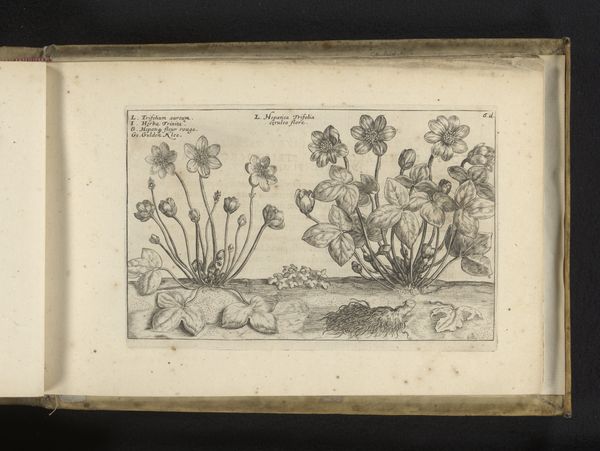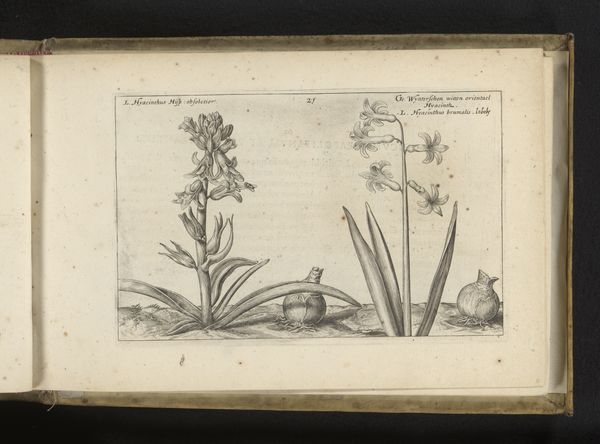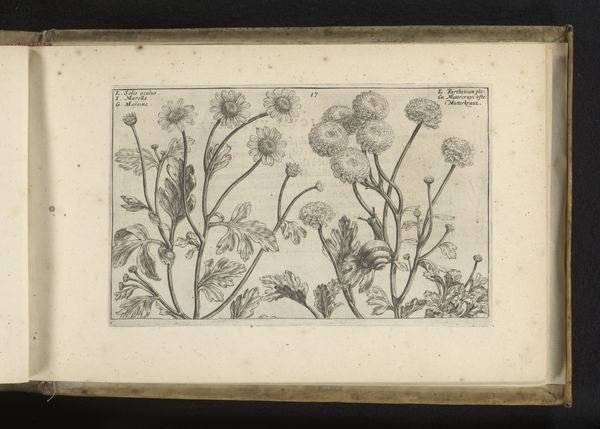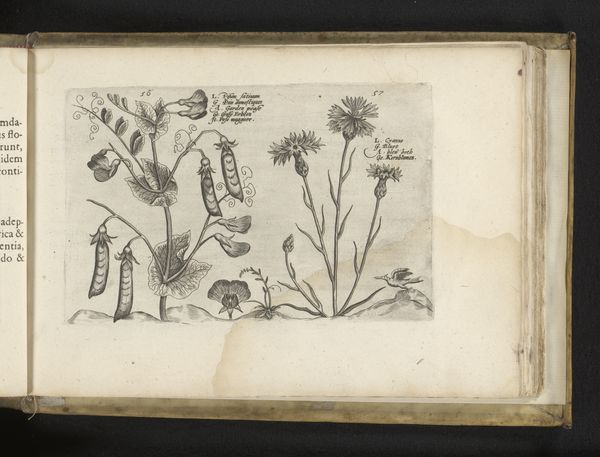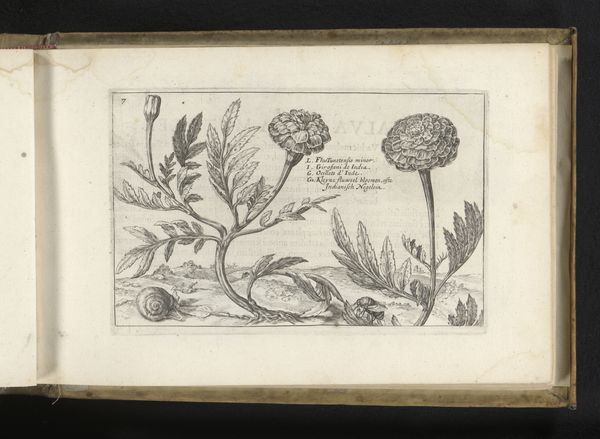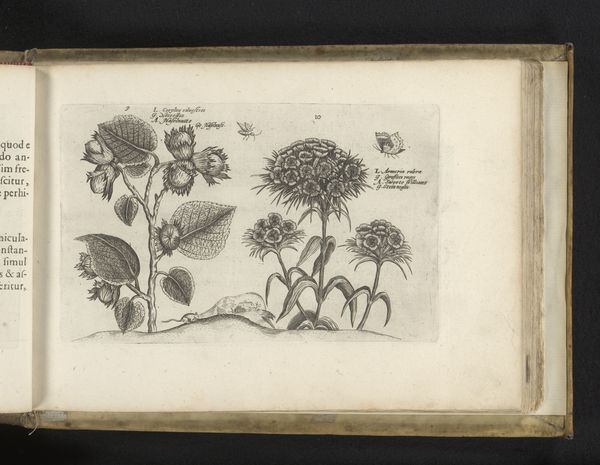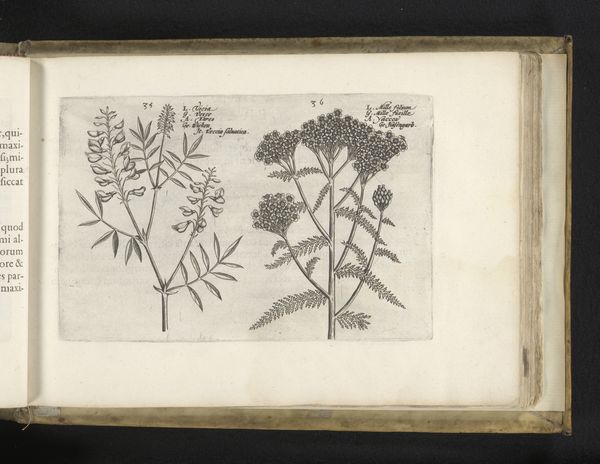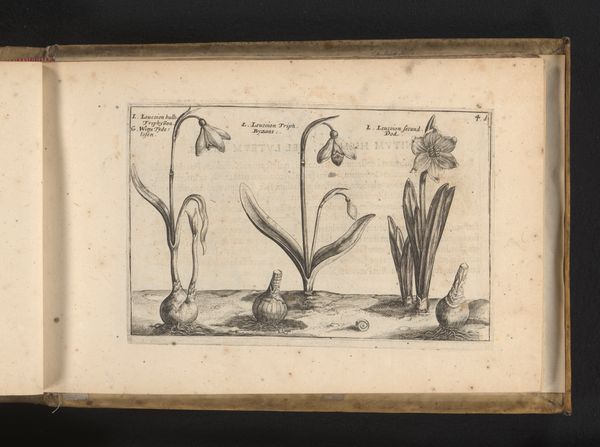
drawing, print, ink
#
drawing
#
aged paper
#
toned paper
# print
#
sketch book
#
flower
#
11_renaissance
#
personal sketchbook
#
ink
#
pen-ink sketch
#
pen and pencil
#
line
#
pen work
#
sketchbook drawing
#
storyboard and sketchbook work
#
northern-renaissance
#
sketchbook art
Dimensions: height 127 mm, width 192 mm
Copyright: Rijks Museum: Open Domain
Curator: Looking at this ink drawing titled "Gewone kamille en zuurbes," dating back to 1617 and currently held at the Rijksmuseum, my immediate sense is one of understated beauty. The starkness of the lines on the toned paper is really quite arresting. Editor: Indeed. The way the artist, Crispijn van de Passe the Younger, uses ink to delineate the chamomile and barberry plants—it's as if he’s not just capturing their form, but also a whole system of knowledge associated with these plants. Curator: Precisely! You see, these botanical drawings weren’t just aesthetic exercises; they were tools in a much larger cultural and scientific project. During the Renaissance, the rise of natural history intersected with artistic practice. These meticulously rendered plants helped standardize botanical knowledge. Editor: I’m intrigued by the symbolic aspect. Chamomile has been a longstanding emblem of patience and resilience. And the barberry, with its thorns, can speak to protection, but also the bitterness of life. The image is carefully balanced, with chamomile presented next to the other thorny plant. Are these perhaps supposed to convey the importance of understanding duality in nature? Curator: Absolutely. The print likely circulated amongst elite scientific circles but even with its scientific purpose, we mustn't discount the book’s symbolic accessibility at a time when herbalism and medicine were far more deeply intertwined with cultural beliefs. Even the 'imperfections' of the drawing suggest process—a sketchbook not meant for formal display, humanizing its creation. Editor: And that aged quality of the paper, that very physical presence, adds another layer. The color reminds me of old medicinal texts. It imbues the print with a certain wisdom, accumulated over centuries. Curator: It prompts me to consider the life cycle of the book itself. Where was it used? Who might have poured over it? These silent witnesses add a powerful resonance. Editor: The simple rendering belies a much richer, multi-layered story, then. Curator: Precisely, a snapshot into a world where art, science, and culture are intricately bound together.
Comments
No comments
Be the first to comment and join the conversation on the ultimate creative platform.
